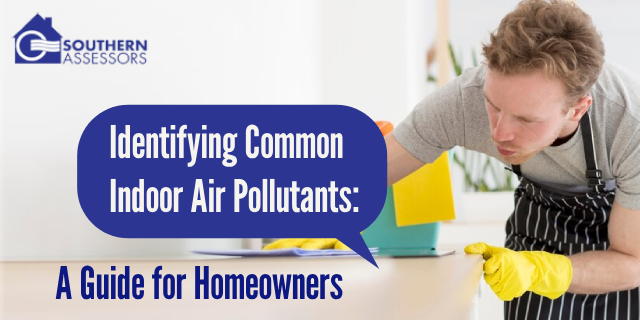Indoor air quality is a vital component that is frequently disregarded in our quest for a healthy home environment. Many contaminants found in houses that risk the health and well-being of their families are often unknown to homeowners.
It’s crucial to comprehend and recognize these typical indoor air pollutants in the UK to design a secure and cozy living environment. We hope to enable households to take proactive steps to reduce hazards and ensure a better living environment for themselves and their family members by arming them with knowledge about indoor air quality.
Allergens
The term allergens refers to those substances that can stimulate the occurrence of allergies in some people who are sensitive to particular allergens. Everyday pollutants in an enclosed space are dust mites, pet fur, pollen, and mold spores.
These microscopic elements may become airborne and can cause sneezing, coughing, watery eyes, and shortness of breath in patients with allergies, asthma, and other breathing issues. It is necessary to reduce the level of indoor pollutant sources. This step can be made by such actions as vacuum cleaning and dusting your house regularly.
Radon
Radon is a type of radioactive gas that is formed when uranium in the soil and rocks decays. It can be transferred through cracks in the foundation, gaps in construction materials, or gaps around cables and pipes.
Radon has no odor, color, or taste, rendering it untraceable except through testing. Exhosen to excessive radon concentrations can result in health problems over time, so radon testing should be carried out as part of the work on air quality indoors.
Formaldehyde
It escapes into the air as a gas off-given by-products such as plywood, particleboard, carpeting, and upholstery. The long-term inhaling of formaldehyde vapor may lead to deteriorating vision impairment, nasal, and throat irritation, as well as respiratory problems and allergies. To reduce the level of formaldehyde exposure, homeowners may opt for air leakage testing UK, low-emission building materials, natural or eco-friendly furnishing, and maintaining the indoor airflow is also recommended.
Mold
Mold is a type of fungi that proliferates in damp, humid areas and can grow everywhere, starting from walls, ceilings, floors, and furniture to fabrics. Fungi spreads spores around the air, which could result in asthmatic symptoms and breathing problems if breathing is not prevented. The presence of mold in your home can aggravate asthma symptoms, result in respiratory infections, and may lead to other health problems as well.
Volatile Organic Compounds (VOCs)
Volatile organic compounds (VOCs) are a broad class of chemicals that, at room temperature, can evaporate out of a variety of home items, such as paints, cleaners, adhesives, solvents, and air fresheners.
Homeowners may reduce their exposure to volatile organic compounds (VOCs) by using low- or no-VOC goods, installing them in well-ventilated places, and letting recently installed materials off-gas outside before bringing them inside.
Final Overview
To provide a safe and healthy living environment for themselves and their family, homeowners must recognize and comprehend typical indoor air contaminants. To ensure a healthy home environment, radon and other toxins must be tested regularly. Leading energy consultant Southern Assessors provides a wide range of services, such as SAP computations, level 5 energy assessments, dynamic simulations, air pressure/permeability testing, EPCs, and sound testing.
Homeowners in the UK can rely on Southern Assessors for house pressure testing, and to deliver accurate evaluations and recommendations to build healthier indoor environments because of their experience and qualified professionals.


